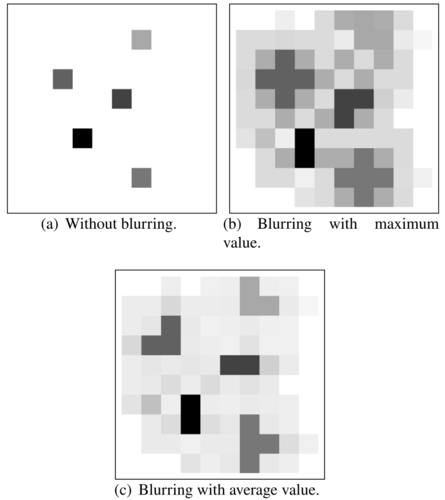Software: TINTO - Converting Tidy Data into Image for Classification with 2-Dimensional Convolutional Neural Networks
Abstract
TINTO is an open-source, user-extendable framework that offers new opportunities for users to convert tidy data into images through the representation of characteristic pixels. For this transformation, TINTO implemented two-dimensional reduction algorithms, such as PCA and t-SNE. Our proposal also includes a technique used in painting known as blurring, which adds more ordered information to the image and can improve the classification task in CNNs.

Citing TINTO: If you used TINTO in your work, please cite the INFFUS Paper:
@article{inffus_TINTO,
title = {A novel deep learning approach using blurring image techniques for Bluetooth-based indoor localisation},
journal = {Information Fusion},
author = {Reewos Talla-Chumpitaz and Manuel Castillo-Cara and Luis Orozco-Barbosa and Raúl García-Castro},
volume = {91},
pages = {173-186},
year = {2023},
issn = {1566-2535},
doi = {https://doi.org/10.1016/j.inffus.2022.10.011}
}
And the SoftwareX paper
@article{softwarex_TINTO,
title = {TINTO: Converting Tidy Data into Image for Classification with 2-Dimensional Convolutional Neural Networks},
journal = {SoftwareX},
author = {Manuel Castillo-Cara and Reewos Talla-Chumpitaz and Raúl García-Castro and Luis Orozco-Barbosa},
year = {2023},
issn = {2352-7110},
volume = {22},
pages = {101391},
doi = {https://doi.org/10.1016/j.softx.2023.1013911}
}
Documentation
You can find all the documentation and sources of TINTO in OEG GitHub.
Video Example
Main Features
- Supports all CSV data in Tidy Data format.
- For now, the algorithm converts tabular data for binary and multi-class classification problems into machine learning.
- Input data formats:
- Tabular files: The input data must be in CSV, taking into account the Tidy Data format.
- Tidy Data: The target (variable to be predicted) should be set as the last column of the dataset. Therefore, the first columns will be the features.
- All data must be in numerical form. TINTO does not accept data in string or any other non-numeric format.
- Two dimensionality reduction algorithms are used in image creation, PCA and t-SNE from the Scikit-learn Python library.
- The synthetic images to be created will be in black and white, i.e. in 1 channel.
- The synthetic image dimensions can be set as a parameter when creating them.
- The synthetic images can be created using characteristic pixels or blurring painting technique (expressing an overlap of pixels as the maximum or average).
- Runs on Linux, Windows and macOS systems.
- Compatible with Python 3.7 or higher.
Input
The following table shows a classic example of the IRIS CSV dataset as it should look like for the run:
| sepal length | sepal width | petal length | petal width | target |
|---|---|---|---|---|
| 4.9 | 3.0 | 1.4 | 0.2 | 1 |
| 7.0 | 3.2 | 4.7 | 1.4 | 2 |
| 6.3 | 3.3 | 6.0 | 2.5 | 3 |
Output
The following Figure show the output of TINTO:


